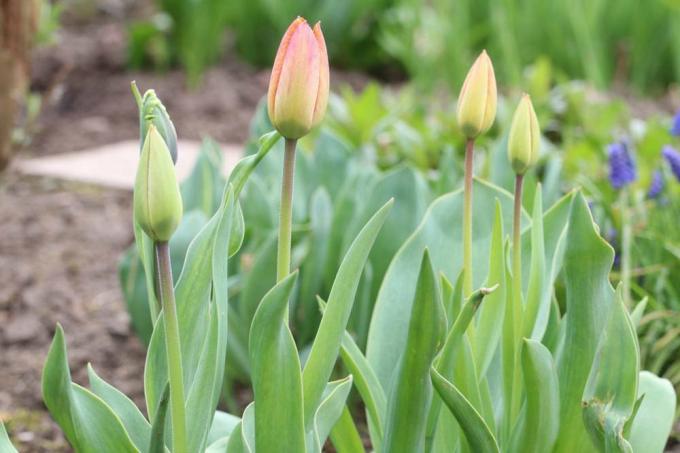
table of contents
- causes
- floor
- time
- Planting depth
- Location
- Nutrient supply
- Cut
- Pests
Tulips come in countless varieties and colors. Planted in the garden bed, they will delight us in spring with their magnificent flowers. Year after year, the easy-care flowers sprout anew and set colorful accents in the garden. But sometimes the flowers are missing and you only get to see green leaves. What can this be? It is difficult to make an accurate diagnosis, but there is some clue to investigating the cause.
causes
floor
Soil, location and planting depth
Tulips are undemanding plants in and of themselves. Nevertheless, they also prefer certain soils and locations. In addition, the planting depth and spacing are important for the spring bloomers to thrive.
time
Soil and timing
In order for tulips to sprout and bloom in the coming spring, hardy tulip bulbs should be planted in autumn before the first frost. The ideal time has come when the ground is already slightly cold. This is the case at temperatures below ten degrees Celsius. As for the soil, the spring bloomers are rather undemanding. But the right soil will help the tulips bloom.
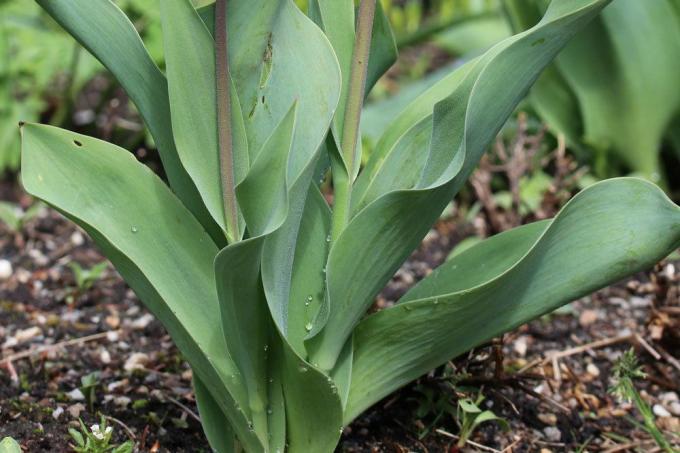
- put the tulip bulbs in a well-drained soil
- if necessary, mix the soil with sand
- Note the pH value between six and seven
- Loamy and stagnant soils are not ideal for tulips
Tip: In some cases the soil becomes “tulip-tired” after a few years. Then put other plants in the tulip site for about three years. Then it should work again with the tulips.
Planting depth
Planting depth and spacing
When planting the tulip bulbs, you should pay attention to the planting distance and the planting depth. The bulb must also be planted in the right direction.

Ideal is:
- a planting distance of 15 centimeters
- a planting depth of 15 to 20 centimeters (normal garden soil)
- a planting depth of up to 30 centimeters in sandy soils
- maximum planting depth: double the height of the bulb
The onion has been properly planted when its tip is facing the sky. After the onions have been placed in the planting hole, press the soil firmly and pour the soil generously.
Tip: With a layer of compost, you give the tulips sufficient nutrients for the coming spring as early as autumn. In addition, the compost layer is a great protection against deep ground frost.
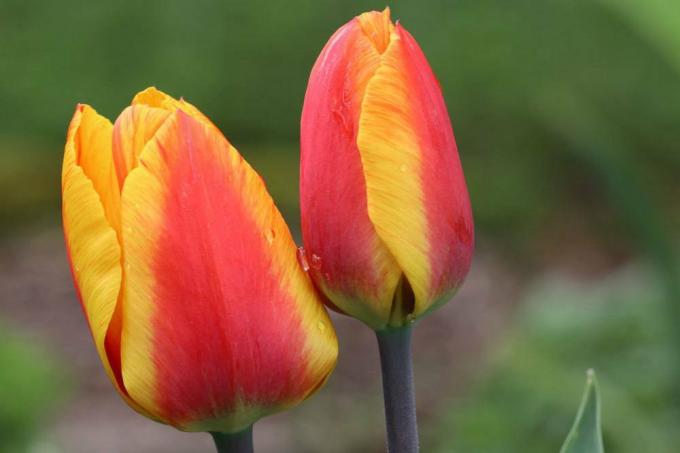
Location
Tulips like a sunny spot. This not only promotes flowering, but also provides ideal conditions for the bulbs to ripen. The latter is particularly important for the tulip bloom in the following year.
Nutrient supply
Tulips only bloom when the bulbs have sufficient nutrients and energy. Therefore, the tulip bulbs should also be supplied with additional nutrients.
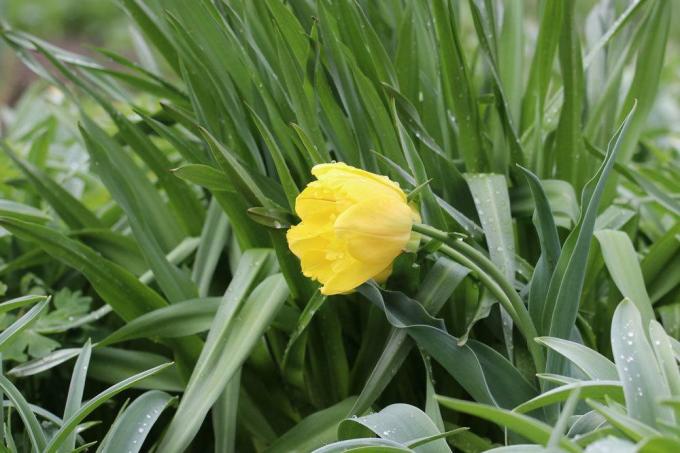
To make it easier for the tulips to bloom:
- mulched with compost in the fall
- from the end of February or the beginning of March, ripe compost should be regularly incorporated every two weeks - don't forget to pour it in!
Once the tulips have finished blooming, the plants continue to need nutrients. The end of the fertilizing time has come when the leaves that have been pulled in are cut off.
Cut
Like others Flowering plants also, tulips develop seeds for reproduction. Since the development of the seeds demands a lot of strength and energy from the plants, it is often at the expense of the flower. In order for the plant to use its energy “correctly” from the hobby gardener's point of view, withered flowers should be cut off. In this way, the tulips create “energy reserves” for the coming year.

The tulip leaves, on the other hand, are only cut when they are completely dead. Green leaves provide the onion with nutrients. This is why you should definitely leave the green leaves standing even if the tulips are not in bloom. In this way, the onion can already supply itself with sufficient nutrients for the coming year.
Tip: You can recognize dead tulip leaves by their completely yellow color.
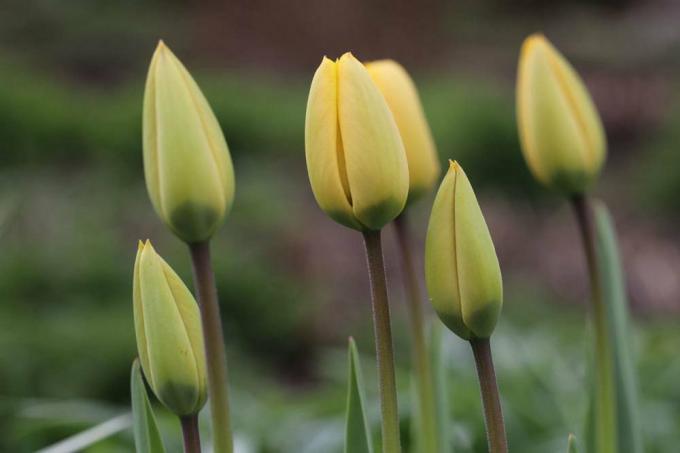
Pests
Voles and wetness
The best soil and location is of no use if Pests to work on the tulips. Voles are a particular danger because they do not stop at tulip bulbs. A protection against the plague are so-called. Vole baskets with close-knit wire mesh. They are available from specialist dealers.
A wet autumn or winter can also prevent the tulip from blooming. Winter be responsible. If too much rain cannot drain away, mold or rot can weaken the bulb and prevent it from developing flowers.



